|
|
 |
From Seed to Cup - Story That Begins from Seed |
| A Heart to Heart, Now Together....Story Starts from Grain. |
| |
Our practice -Issues that coffee holds today. |
Nowadays coffee production plays one of the biggest part in the world economy.
In those countries in which coffee is often used for an acquisition of foreign currency, coffee production is very important as source of income, and this fact is closely related to the rich ecologycal system there. |
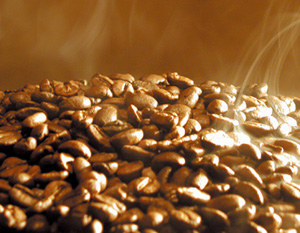 |
 |
Today, however, the coffee industry is on the verge of a crisis. The market price has come lower than its producing cost, and the majority of the workers are suffering from pverty.
The chronic cheapness make it difficult for the workers to keep a stable production in a high quality, to conserve their farmland and natural resources there, as well as to support their lives. |
|
 |
| So as to overcome these difficulties, sustainable coffee (certified as environmentally responsible coffee) appeared. A policy of sustainable coffee advocate the fair wages to workers, as well as high standards of environmental stepwardship and social conduct. Still, there is a big gap between the market today and the sustainable coffee system that trys to offer new market oppotunities. |
| Nevertheless, the outcome of the movement is influenced not only by the producers but also by exporters, business companies, roasters, and consumers including you. This issue should be solved in cooperation of all the passages. |
 |
|
 |
『From Seed to Cup』
This theme was made not only for introducing all the processes untill coffee is delivered to consumers, but also for informing people of issues which the coffee world are facing, and cementing the relationship between consumer and producing nations by deepening their affection for coffee..
We swear that we will continue the activity Win-Win, which are helpful for both producers and costomers, as the most important theme of our company.
|
|
| |
From Seed to Cup |
Flower/Fruition |
| Coffee plants are evergreen shrubs of the family Rubiaceae as Gardenia, and cultication of coffee originated in Ethiopia. They are classified into three main spieces, which are Coffea Arabica, Coffea Liberica, and Coffea Arabica, and Coffea Arabica is commercially cultivated the most today.
Coffee plants may grow 5 m tall, but usually pruned back to 2-3 m.
The flowers are white and fragrant like Jasmine, and the bloom starts about a few years after plating.
Although the life of each flower stays only for a few hour, the flowers bloom simultaneously, and the flowering period stays for several months, and the harvest time lasts almost half a year in some areas.
|
 |
|
 |
Coffee beans are often refered to as "coffee cherrys" because of their looks and change of color from green to red when they get ripen. Coffee bean is a seed after removing the silver skin, the pulp, and the parchment from the berry. Each berry usually contains two light-green seeds with their flat sides together, which are called "green beans". After picking them out and a process of refining and roastig, we can finally enjoy familiar coffee. |
|
| |
Harvest |
| Ripe coffee cherrys are picked by hands, or a large-size tractor with spinning brush to strip the berrys in a large plantation. At this time, since machine itself cannot classify the berrys depending on the level of ripeness, the workers change the strength of the brush so as to harvest only optimum ones. |
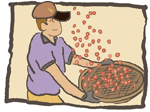 |
| After that, the beans are put through a sieve to get rid of impurities and carried to a refinery plant. Coffee beans cannot be roasted only after harvesting. |
|
| |
Refining |
Dry Pocessing
-Spread out the berris in the sun on cement for a week, turning regularly for drying them well.
Wet Processing
-The flesh of the berries is separated from the seeds, and then the seeds are soaked in water for about a day for getting it fermented and soft enough to remove. This dissolves any pulp or sticky residue that may still be attaced to the seeds. They are then washed and dried in the sun, and put into a threshing machine for finishing process. |
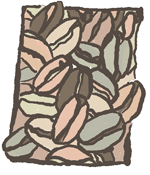 |
|
| |
Sorting |
| After threshing and removing defective beans, they classify the grade in size, shape, specific gravity and so on, depending on the standard of the producing country. |
|
| |
Cupping |
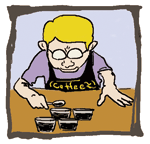 |
If the sorting process which is to remove defectives is negative checking, cupping process is positive checking as it is to evaluate such characters of each coffee as its body flavor, acidity, and etc. This evaluation test even desides transaction amount of some merchandise, and will be an important factor for buying. |
|
| |
Transporting / Custody |
| After the evaluation and sorting, coffee beans are finally shipped. They are usually transported by sea in a container ship and stored in a warehouse. In our company, however, coffee beans are finely stored in a storehouse where the temperature is kept constant so as to keep the quality and avoid the change of tastes till the roasting process. |
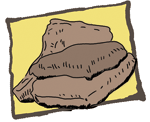 |
|
| |
Roasting |
 |
Coffee beans give off that fascinating flavor and taste only after this process in which they are roasted at very high temperature.
Roasting removes water in beans, and the color will gradually change into cinnamon color, light brown, medium brown, and dark brown by a chemicaal change of components. A cup og coffee will be finally enjoyed after grinded and brewed.
A certain technique of roasters with wide experience is inevitable for thermally decomposing the savory taste in green beans and making a chemical reaction, and pulling out the unique and good tastes as flavor, acidity, bitterness, sweetness, body, and etc.
All the coffees which we offer are imported in green beans from the producing areas, and roasted by five special roasters with fully using their five senses. |
|
|